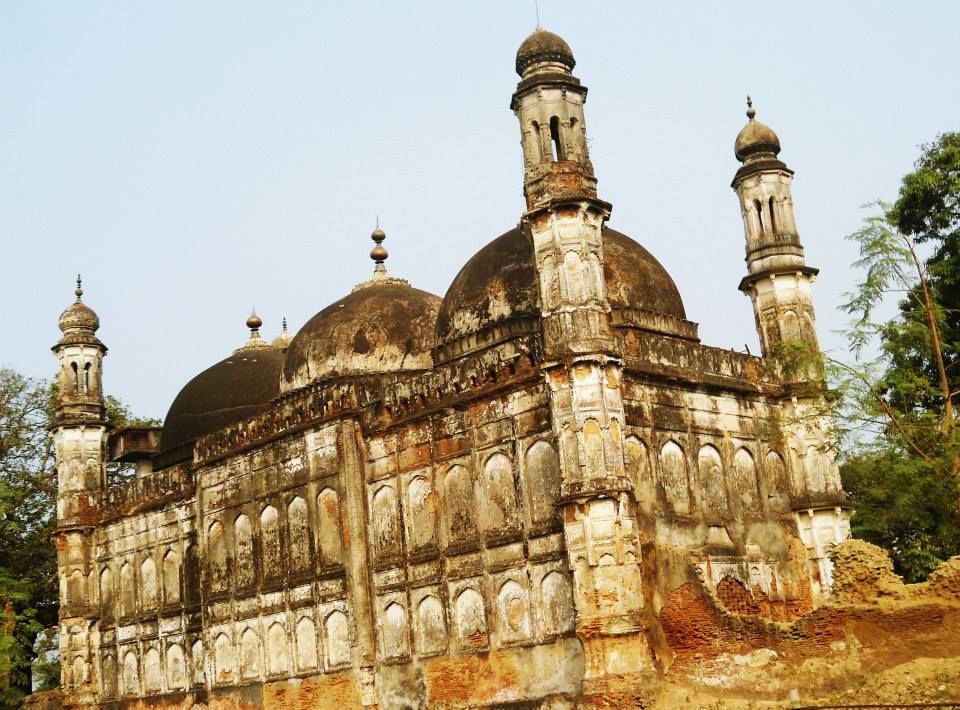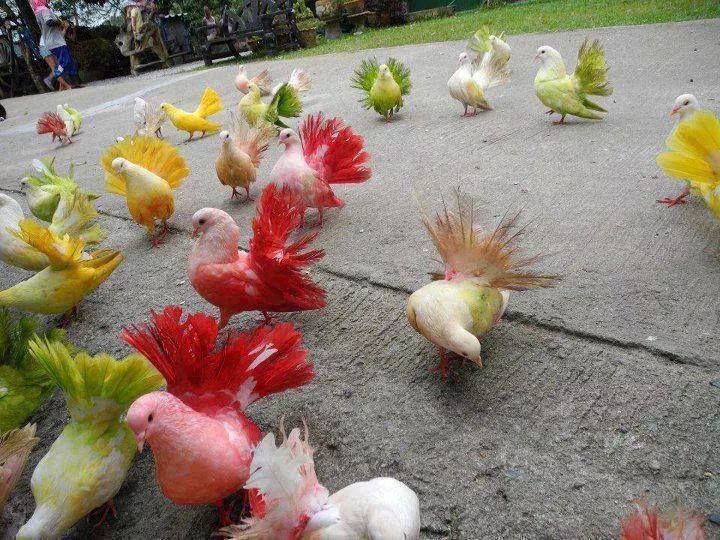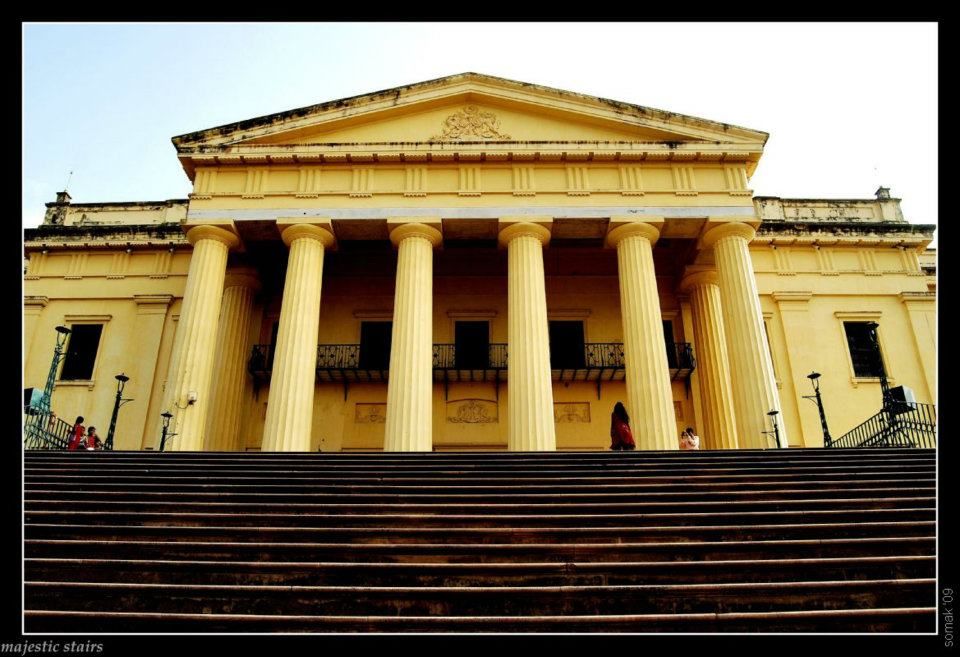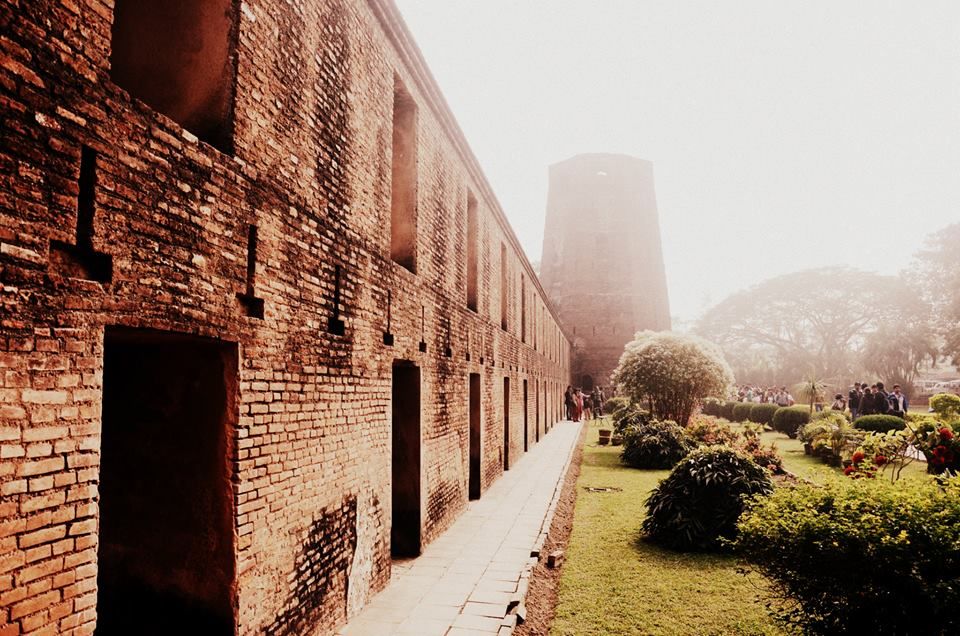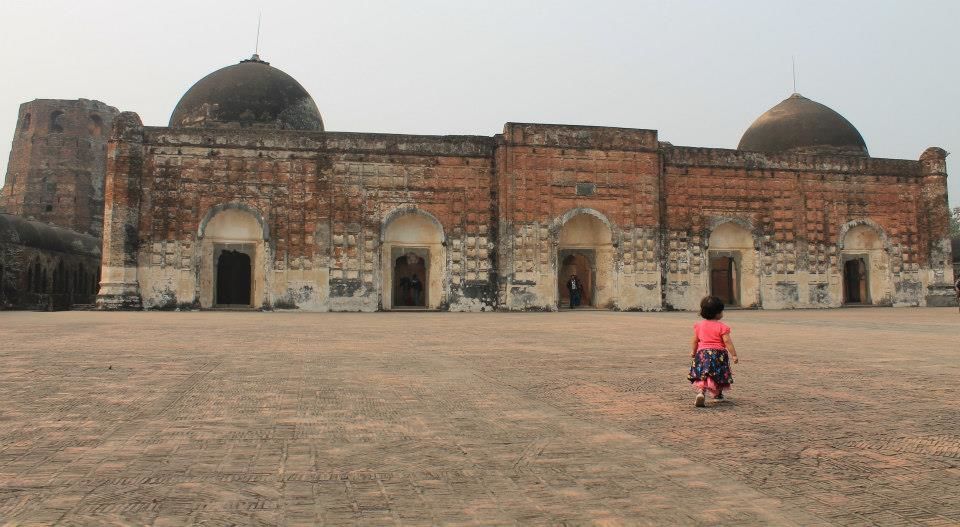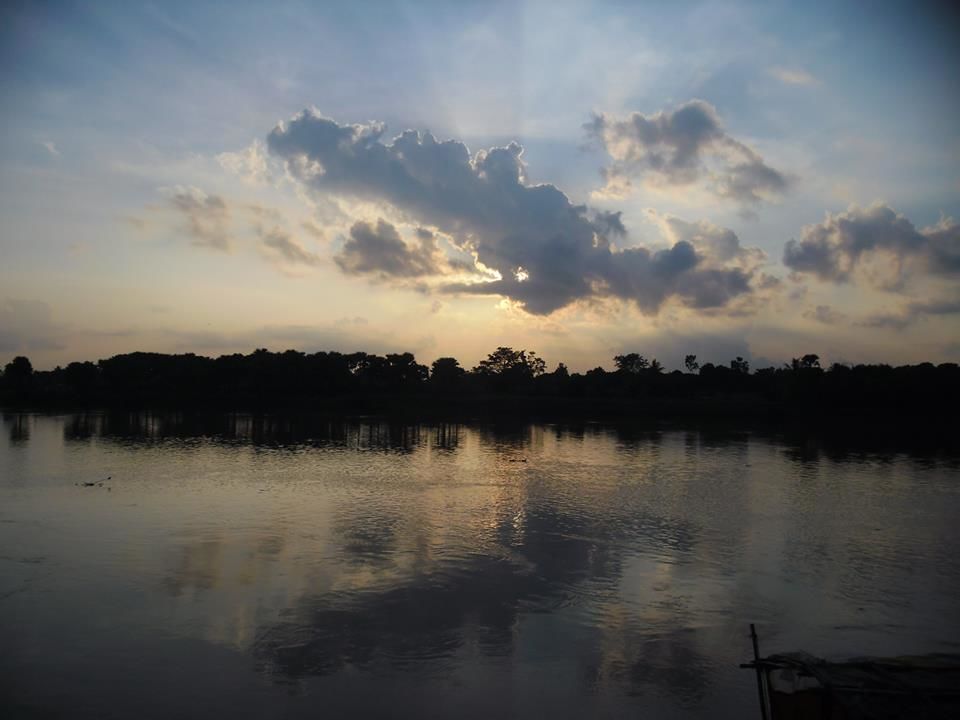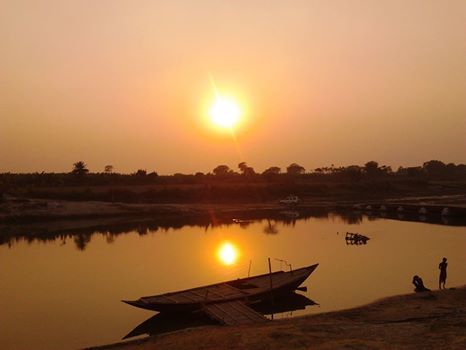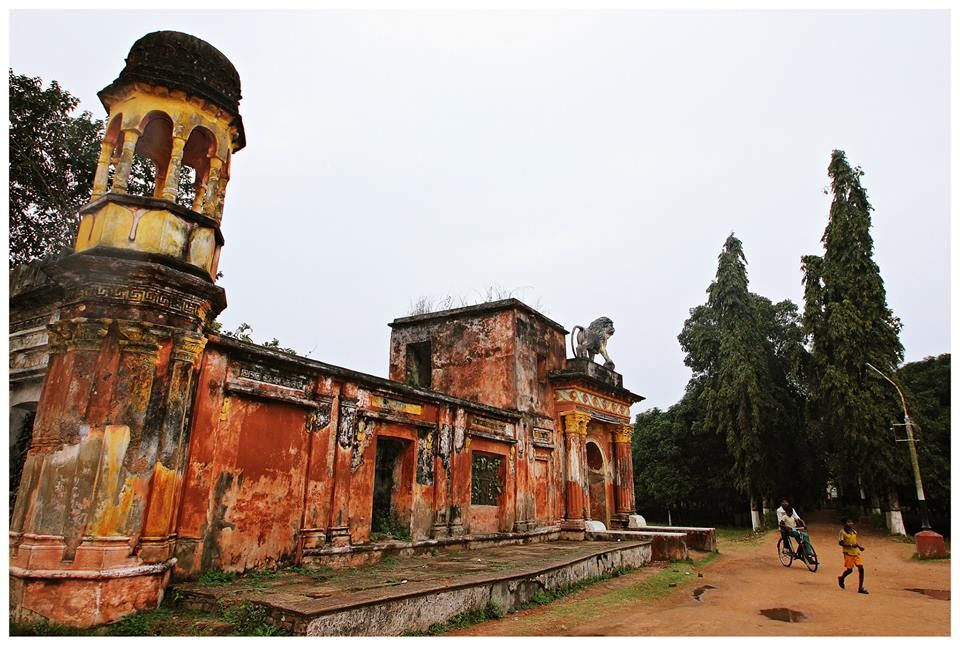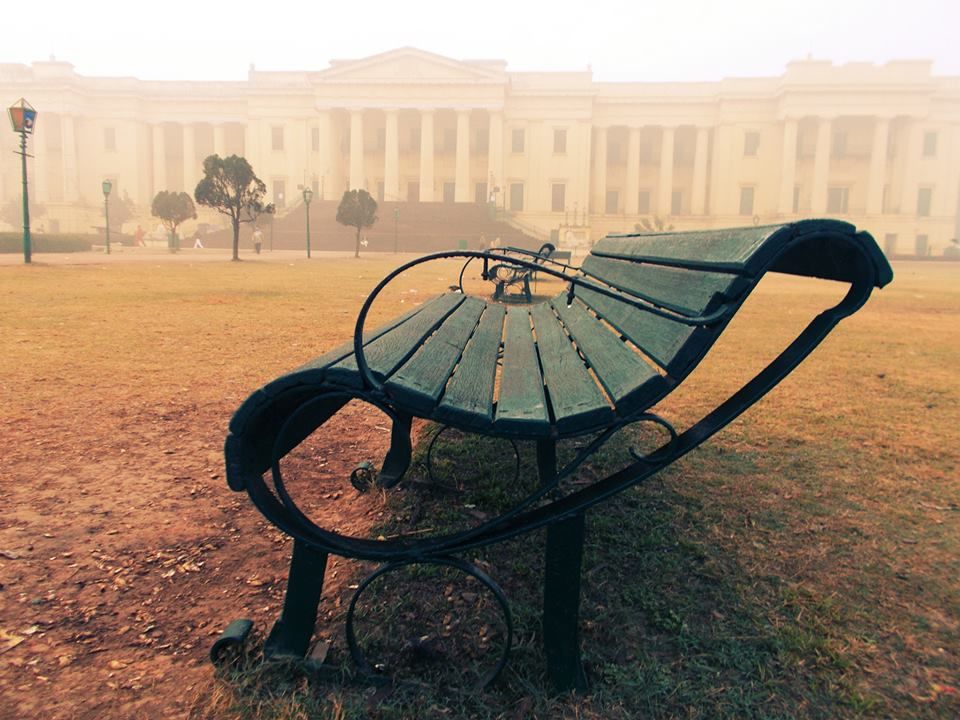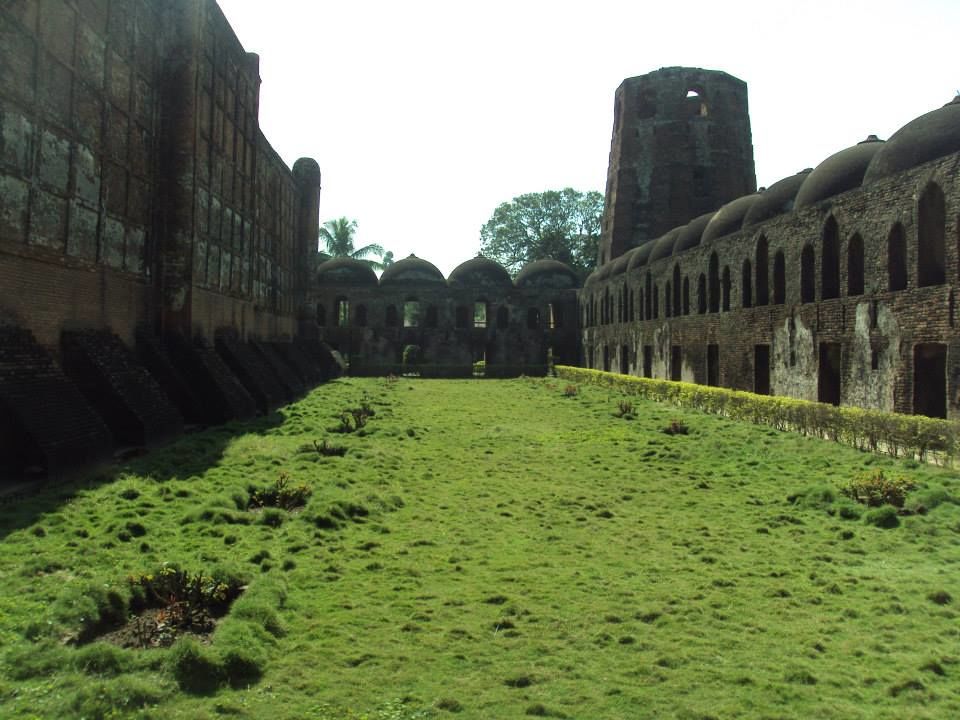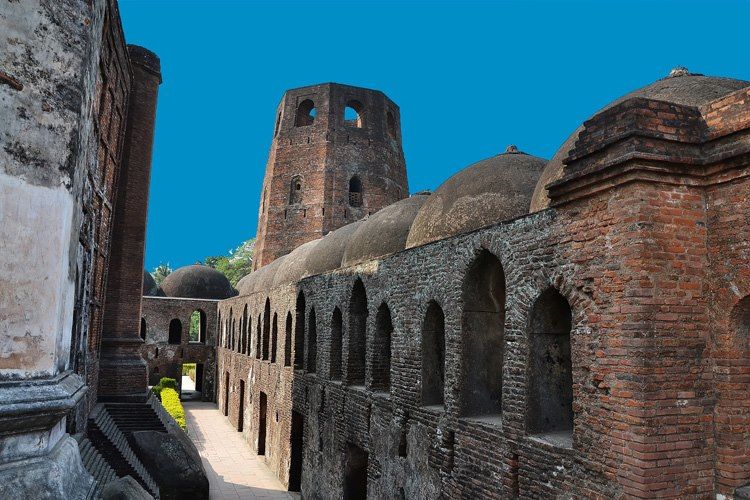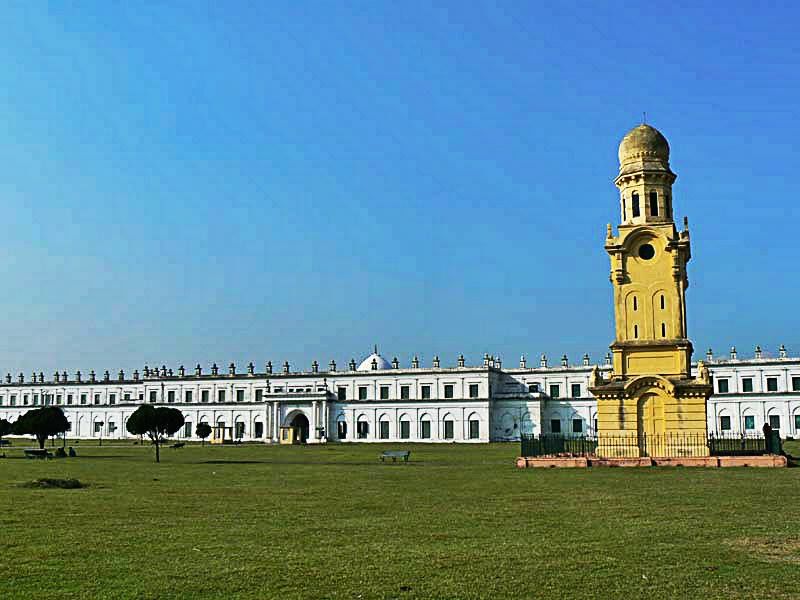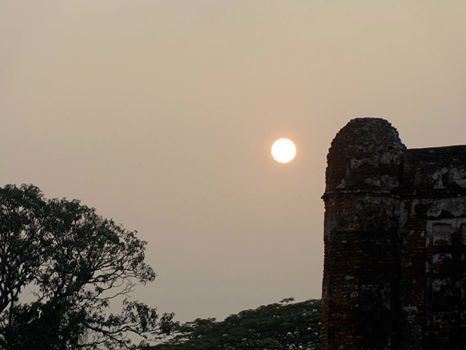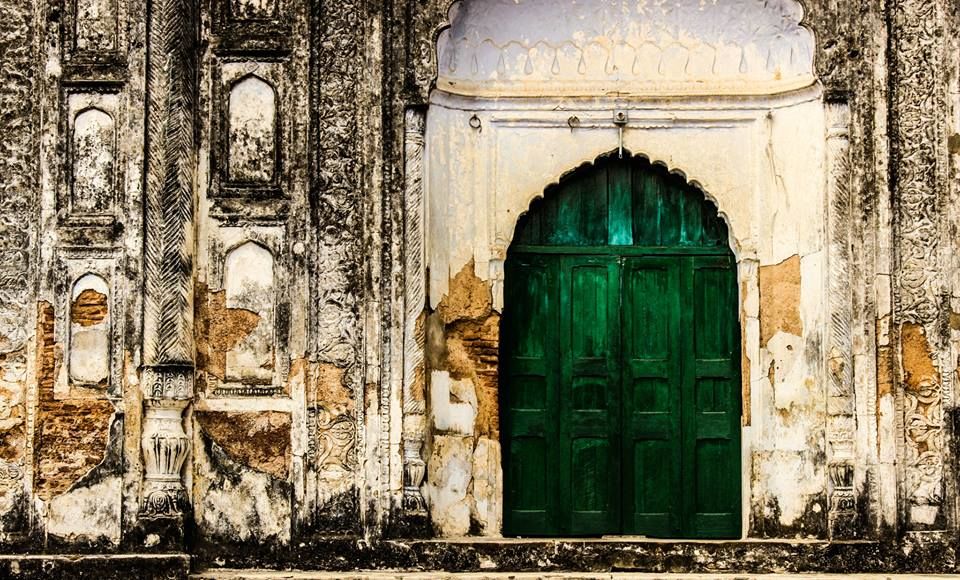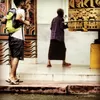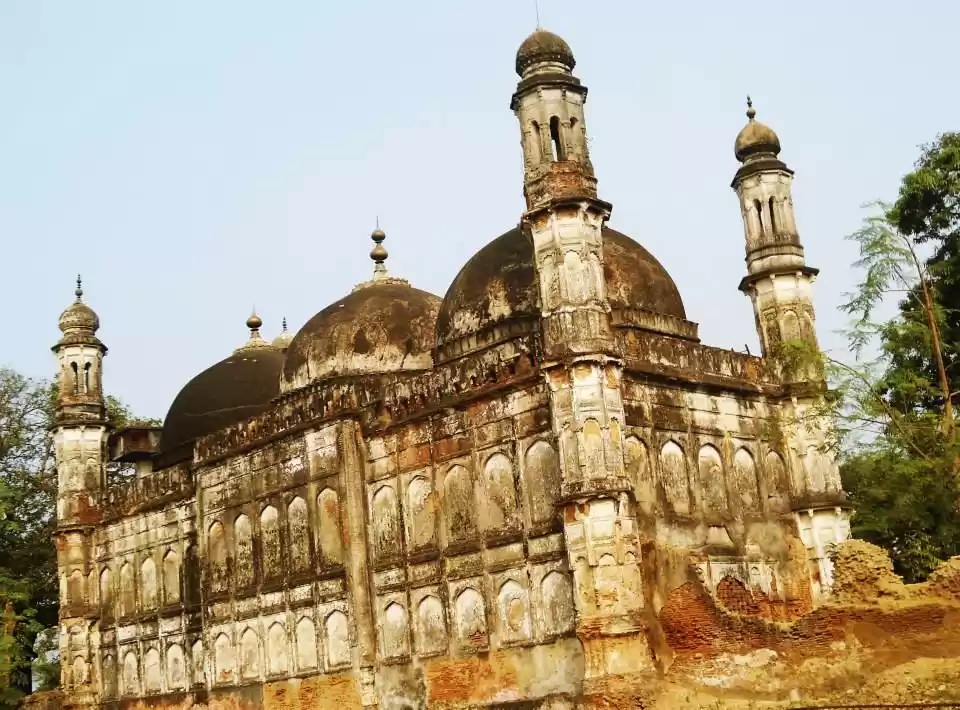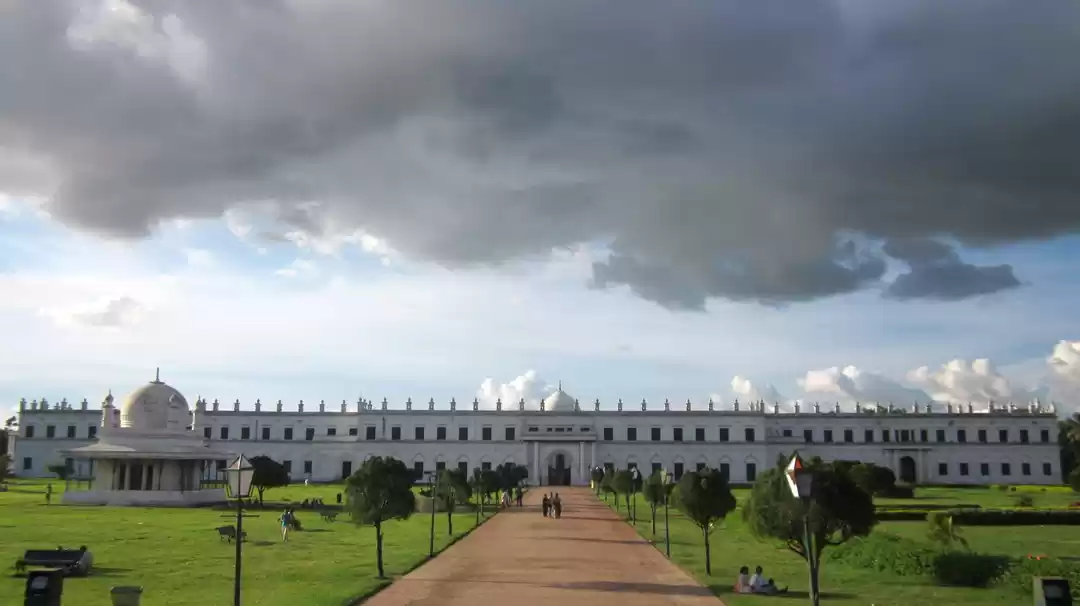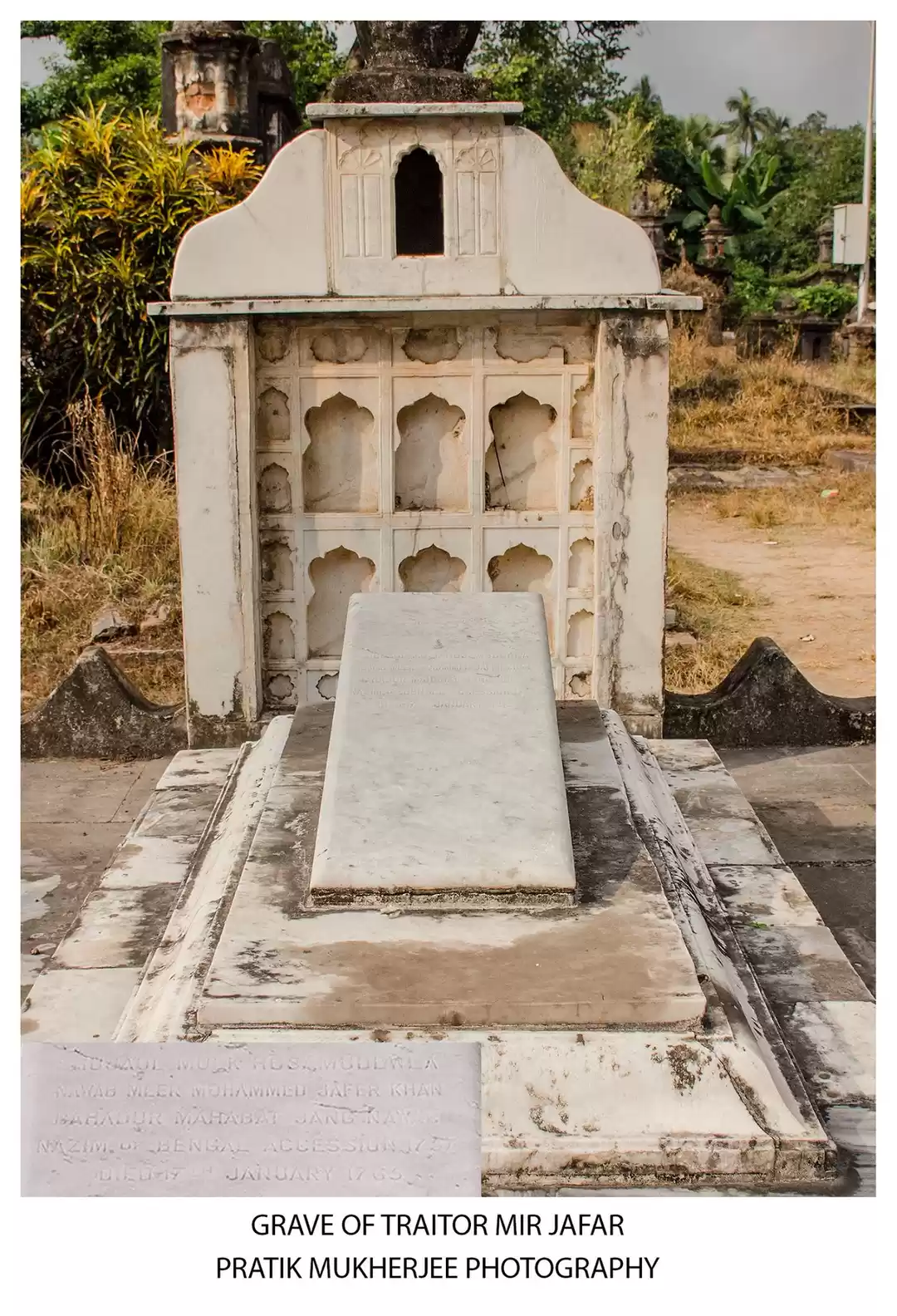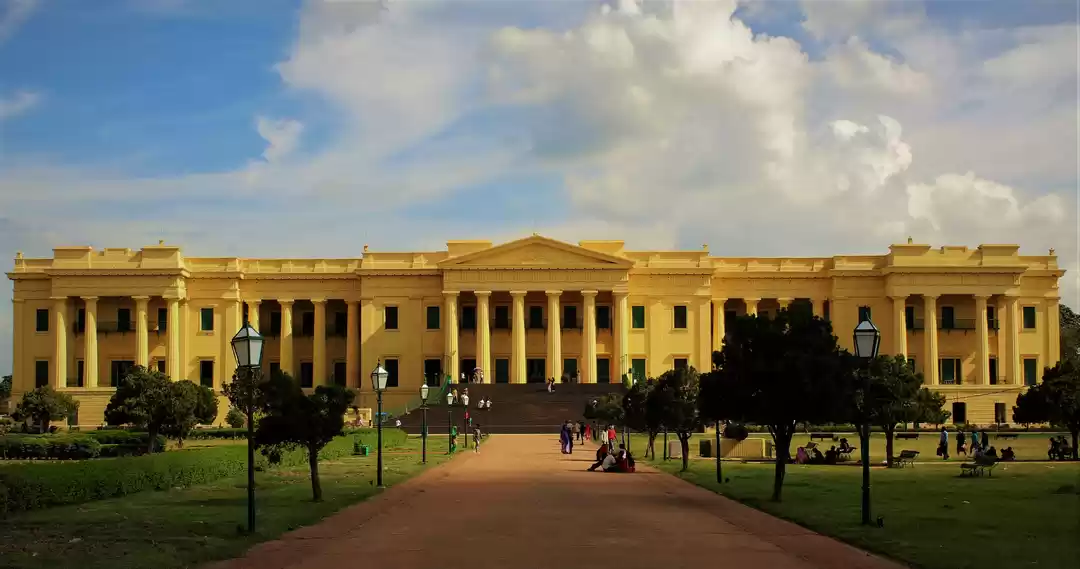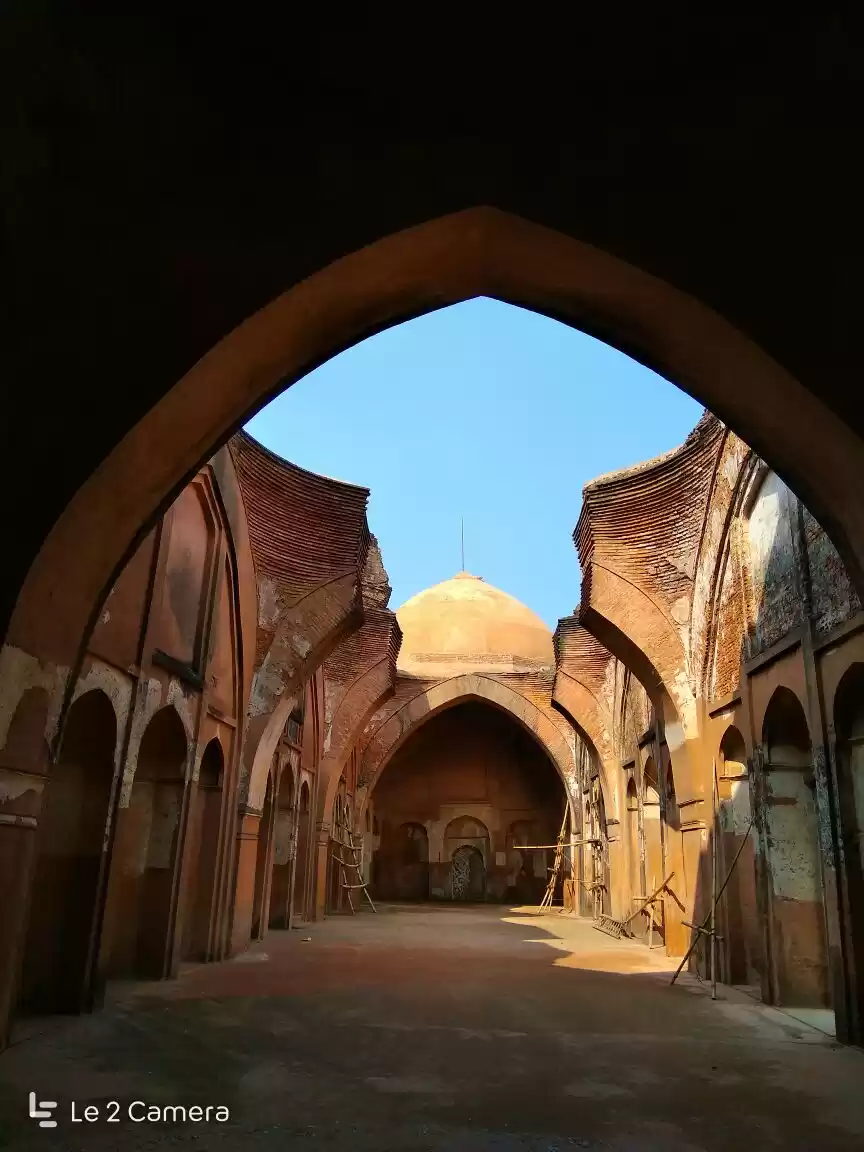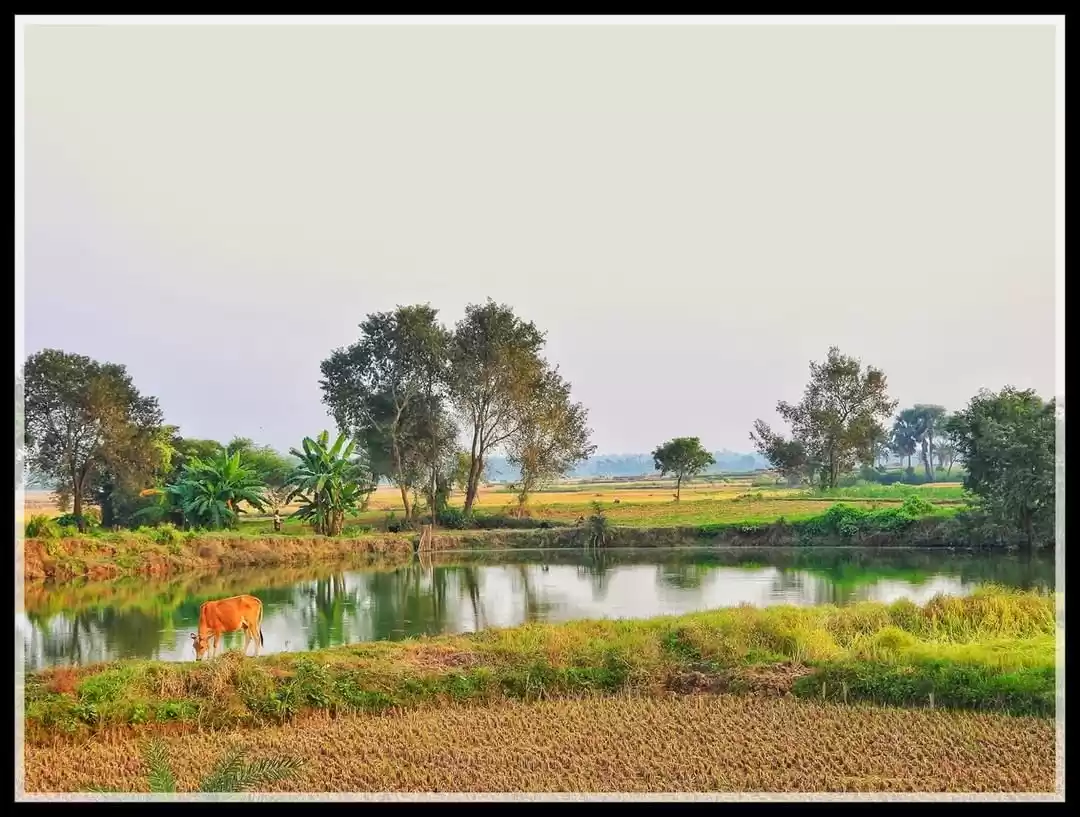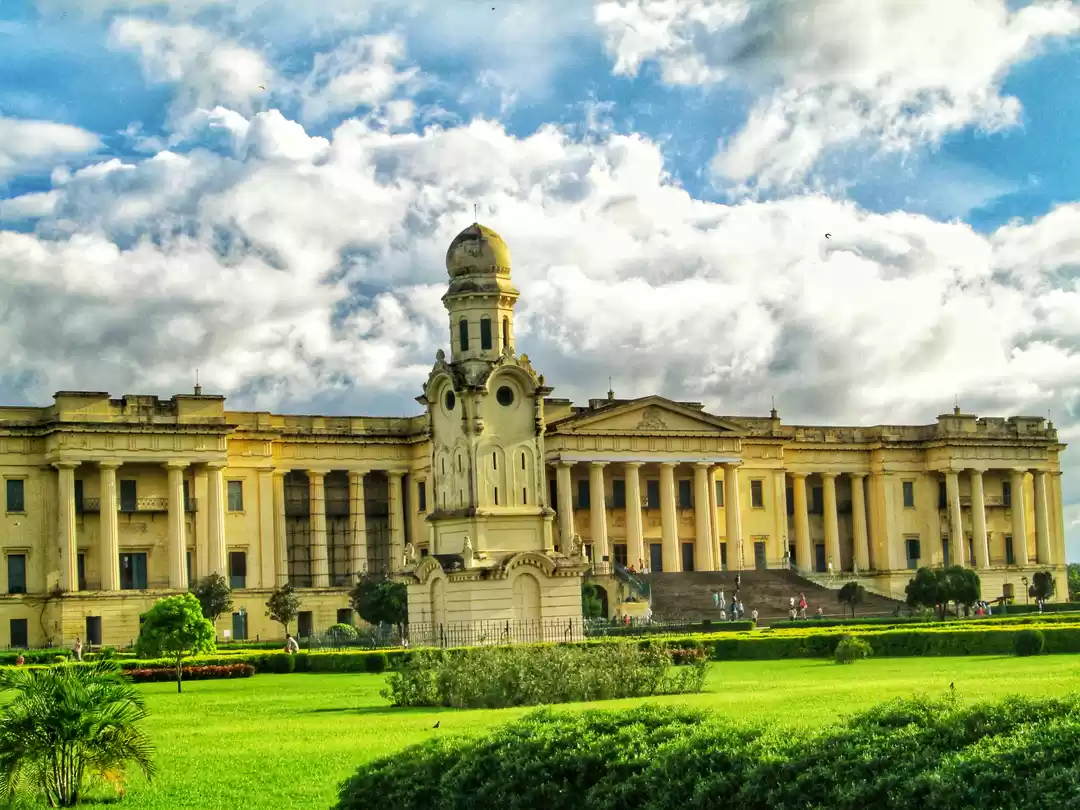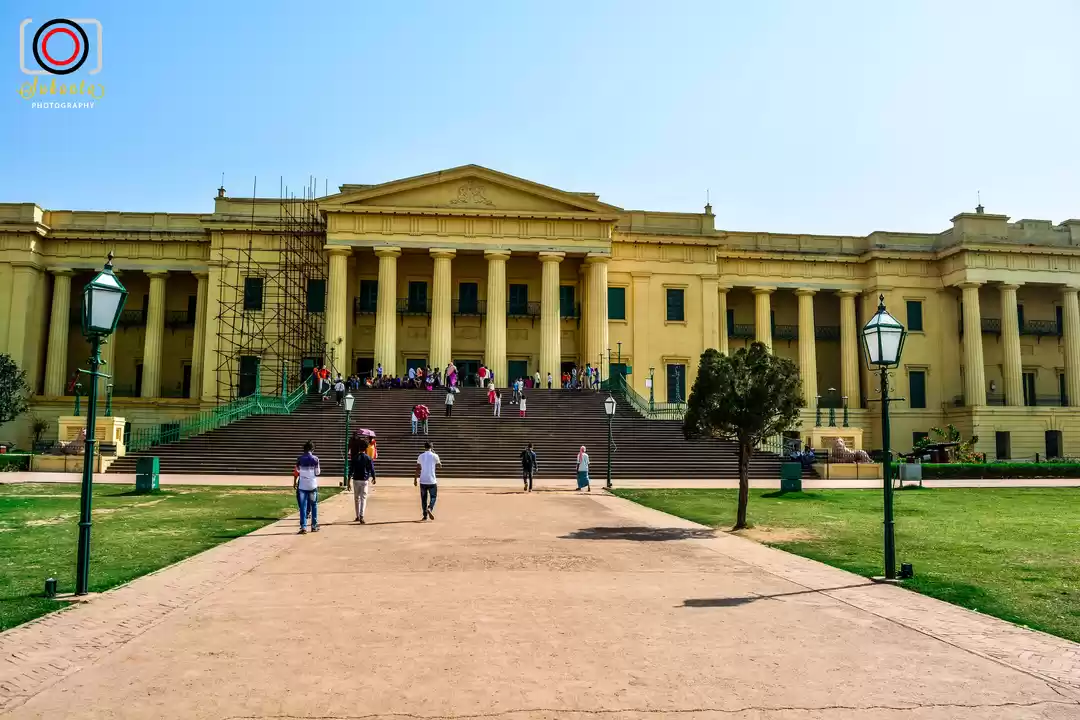The name of the palace owes to more than thousand real and false doors, vast corridors in it. In 1985, the palace was handed over to the Archaeological Survey of India for better preservation. The museum is regarded as the biggest site museum of Archaeological Survey of India. This three-storey palace was built in 1837 by Duncan McLeod for the Nawab Najim Humaun Jah, descendent of Mir Zafar. The total area of Hazarduari Palace is 41 acres.
To the north of the Hazarduari Palace, stands the Nizamat Imambara, built in 1847 AD. by Nawab Nazim Mansoor Ali Khan Feradun Jah, son of Humayun Jah, at a cost of more than 6 lacs, after the Imambara built by Siraj-ud-Doula had been destroyed by fire. It took only eleven months to construct this Imambara. The Imambara, which is the largest in Bengal, is perhaps the largest in India.
Built in 1724, its importance lies not only as a great centre of Islamic learning but also for the tomb of Murshid Quli Khan, who is buried under the entrance staircase. The most striking feature is the two large corner towers having loopholes for musketry. At present it is maintained and protected by the Archaeological Survey of India and the Government of West Bengal. It is a brick built mosque and is surrounded by double storied domed cells, which were built for those who read the Holy Quran in those days, they can also be called a Madrasa. All the rooms can in all accommodate 700 Quran readers. These rooms from a cloister to the huge courtyard in front of these rooms.
At real beauty.
The mosque has a good setting placed in a small garden and burials in front. In front of all this is a huge lake excavated during the time of the Nawabs and provides a great setting all throughout the year. Unfortunately this is yet to be taken over by ASI and not maintained well. The Motijheel Mosque and cemetery has a very important place in the history of Murshidabad. Mawazesh Md. Khan, son-in-law of Nawab Ali Vardi Khan and subedar of then Bengal, Bihar and Odisha, and Ekramoddulla, younger brother of Nawab Sirajuddullah, are buried here. Motijheel is a horse-shoe shaped lake. And in a palace adjoining it, which now lie in ruins, was the home of Warren Hastings when he became the political president at the Durbar of the Nawab Nazim. The tombs lie to the east of the mosque.
